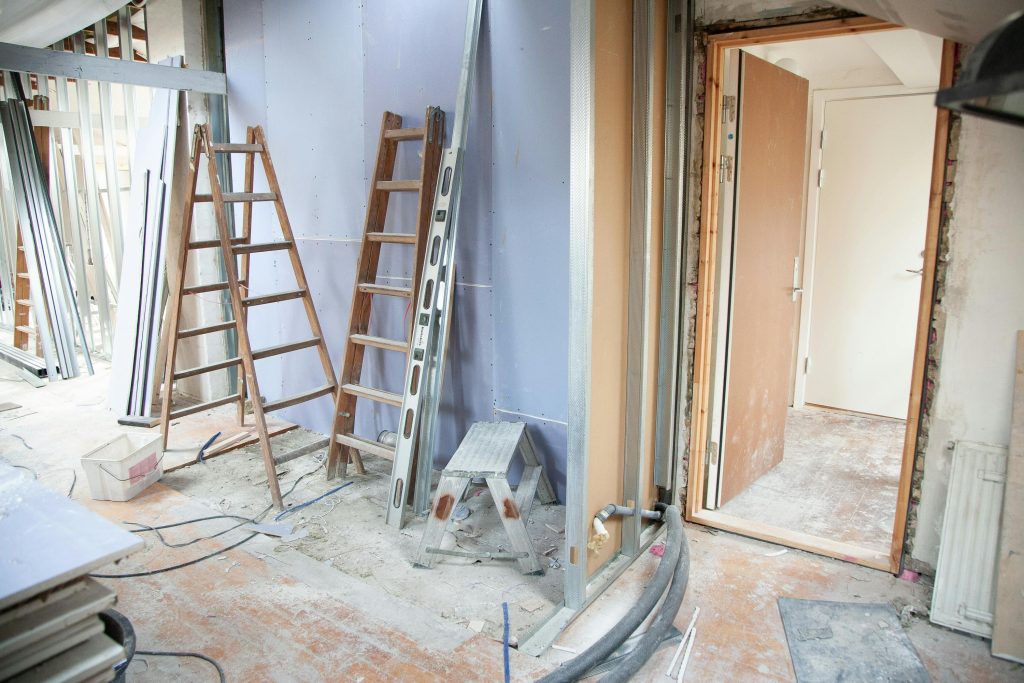7 Home Renovation Mistakes You’ll Regret (and How to Avoid Them!)
When Dreams Meet Dust: Navigating Home Renovations Wisely
A home renovation starts with excitement—visions of open-concept spaces, modern finishes, and a fresh start. However, the process often brings unexpected stress, delays, and costly mistakes. What begins as a simple project can quickly spiral into an overwhelming experience if the proper steps aren’t taken.
Photo by Rene Terp
Imagine spending months planning your dream kitchen, only to realize after installation that the cabinet doors don’t fully open, or investing in high-end flooring that scratches easily under everyday use. These mistakes aren’t just frustrating—they impact your home’s functionality, value, and comfort. The good news? Most renovation regrets are entirely avoidable with careful planning and the right mindset.
Home improvement isn’t just about aesthetics; it’s about creating a space that supports well-being. A well-designed home can boost mood, improve productivity, and even enhance relationships by fostering a comfortable environment. But when mistakes happen, the stress of fixing them can take a toll on your peace of mind.
The key to a successful renovation is balancing vision with practicality. By learning from common pitfalls, homeowners can make more intelligent choices that lead to a space they love—without the headaches.
1. Neglecting Bathroom Design and Layout
Bathrooms are more than just functional spaces; they’re places where comfort and efficiency should go hand in hand. Yet, many homeowners overlook key design elements that can make a huge difference. A poorly planned layout can result in cramped spaces, inadequate storage, and awkwardly placed fixtures.
For instance, installing a freestanding tub in a small bathroom might seem luxurious, but if it leaves no room for movement, it quickly becomes an inconvenience. The same goes for showers without proper ventilation—trapped moisture can lead to mold and mildew, creating long-term issues.
Hiring an experienced bathroom remodeling company helps avoid these missteps. Professionals can provide insights on optimizing space, selecting durable materials, and ensuring that plumbing and ventilation systems work efficiently. Their expertise prevents costly errors that could require expensive corrections later. For instance, when installing lighting or ventilation features, using waterproof wire connectors can help ensure safe, long-lasting electrical connections—especially in a moisture-prone environment like a bathroom.
When planning a bathroom remodel, think beyond aesthetics. Consider storage needs, accessibility, and ease of maintenance to create a practical space for years to come.
2. Prioritizing Trends Over Timeless Design
Trendy design choices may look appealing now, but they don’t always age well. Homeowners often make the mistake of chasing fleeting styles, only to find their renovations feel outdated in just a few years.
For example, bold-colored kitchen cabinets or intricate wallpaper patterns might be popular today but tastes change. When considering design updates, focus on timeless elements for major investments like countertops, flooring, and cabinetry.
That doesn’t mean your home should feel boring—add personality through smaller, easily changeable details like wall paint, light fixtures, and decor. This way, you can refresh your space without undergoing another costly renovation.
3. Underestimating the Budget
One of the homeowners’ biggest mistakes is failing to plan a realistic budget. Renovations almost always cost more than expected due to hidden issues like outdated wiring, plumbing problems, or structural surprises.
Many people allocate funds only for labor and materials, forgetting about permit fees, disposal costs, and unexpected delays. A good rule of thumb is to set aside at least 15-20% extra to cover unforeseen expenses.
Choosing the cheapest contractor or materials may seem like a smart way to save, but it often backfires. Poor craftsmanship and low-quality materials can lead to premature repairs and replacements, increasing costs in the long run. Instead, invest in skilled professionals and durable materials to ensure lasting results.
4. Choosing the Wrong Materials
Not all materials are suitable for every home. What works beautifully in one setting may not hold up well in another. Many homeowners make the mistake of selecting materials based solely on appearance without considering durability or maintenance requirements.
For example, natural wood flooring looks stunning but isn’t ideal for high-moisture areas like bathrooms or kitchens. Similarly, marble countertops add elegance but are prone to stains and require frequent sealing.
Before committing to materials, consider your lifestyle, climate, and maintenance preferences. If you have young children or pets, opt for scratch-resistant flooring. In humid environments, choose moisture-resistant materials that won’t warp or degrade over time. A thoughtful selection process ensures your renovation stands up to daily wear and tear.
5. DIYing Beyond Your Skill Level
Taking on DIY projects can be rewarding, but it’s essential to recognize your limits. Some tasks, like painting walls or installing shelves, are manageable. Others, like electrical work, plumbing, or structural modifications, require professional expertise.
Attempting complex projects without the necessary skills can lead to costly mistakes. Poorly installed wiring poses a fire hazard, and improperly fitted plumbing can damage leaks and water. Many homeowners spend more fixing DIY errors than they would have if they’d hired a professional from the start.
If you’re considering DIY, assess the complexity and risks of the project. While minor upgrades can be tackled independently, more extensive renovations should be left to experienced contractors who ensure safety and compliance with building codes.
6. Overlooking Permits and Regulations
Skipping permits might seem like an easy way to cut costs, but it can lead to serious consequences. Local building codes exist for a reason—they ensure safety and structural integrity. Ignoring them can result in fines, project delays, and even forced removal of completed work.
Many homeowners don’t realize that even minor renovations sometimes require permits. Projects like adding electrical outlets, modifying plumbing, or removing load-bearing walls often need approval. Failure to obtain the necessary licenses can also create problems when selling your home, as unpermitted work may fail inspections.
Before starting any renovation, check local regulations or consult a contractor who can handle the permit process for you. It’s a small step that prevents significant headaches down the road.
7. Forgetting About Long-Term Maintenance
Certain design choices look stunning at first but demand constant upkeep. Homeowners often get caught up in aesthetics without considering the time and effort needed to maintain their renovations.
Take open shelving, for instance—it creates an airy, modern look but requires regular dusting and organization. Similarly, glass shower doors look sleek but need frequent cleaning to prevent water spots and soap scum buildup.
Before committing to a renovation choice, ask yourself: How much maintenance am I willing to do? Opt for materials and designs that align with your lifestyle. Quartz countertops, for example, require less upkeep than marble, and matte-finish cabinets show fewer fingerprints than glossy ones.
Creating a Home You’ll Love Without the Regrets
Home renovations should enhance your living space, not create stress and regret. By avoiding these common mistakes, you can ensure a smoother process, stay within budget, and achieve results that truly meet your needs.
Proper planning, careful material selection, and working with experienced professionals can make all the difference. Whether you’re updating your bathroom, kitchen, or entire home, thoughtful choices now will save you from costly corrections later.
Before starting your next renovation, take a step back, review your plans, and make sure you’re setting yourself up for a home upgrade you’ll love for years to come.






